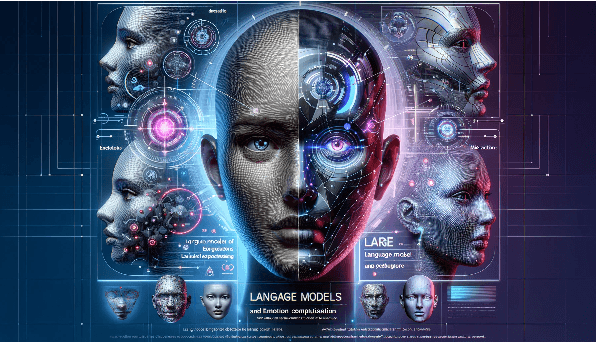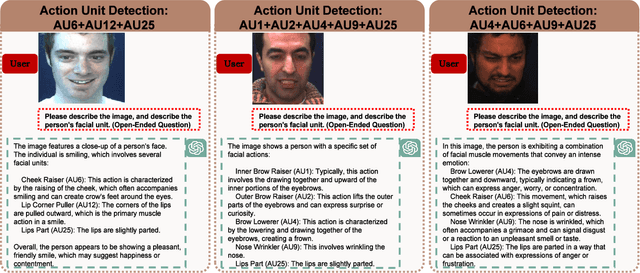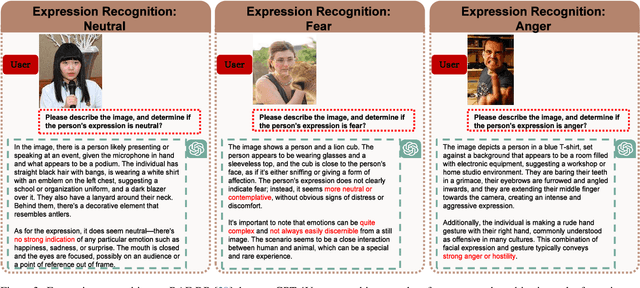Dengbo He
Sage Deer: A Super-Aligned Driving Generalist Is Your Copilot
May 15, 2025Abstract:The intelligent driving cockpit, an important part of intelligent driving, needs to match different users' comfort, interaction, and safety needs. This paper aims to build a Super-Aligned and GEneralist DRiving agent, SAGE DeeR. Sage Deer achieves three highlights: (1) Super alignment: It achieves different reactions according to different people's preferences and biases. (2) Generalist: It can understand the multi-view and multi-mode inputs to reason the user's physiological indicators, facial emotions, hand movements, body movements, driving scenarios, and behavioral decisions. (3) Self-Eliciting: It can elicit implicit thought chains in the language space to further increase generalist and super-aligned abilities. Besides, we collected multiple data sets and built a large-scale benchmark. This benchmark measures the deer's perceptual decision-making ability and the super alignment's accuracy.
STAHGNet: Modeling Hybrid-grained Heterogenous Dependency Efficiently for Traffic Prediction
Dec 23, 2024



Abstract:Traffic flow prediction plays a critical role in the intelligent transportation system, and it is also a challenging task because of the underlying complex Spatio-temporal patterns and heterogeneities evolving across time. However, most present works mostly concentrate on solely capturing Spatial-temporal dependency or extracting implicit similarity graphs, but the hybrid-granularity evolution is ignored in their modeling process. In this paper, we proposed a novel data-driven end-to-end framework, named Spatio-Temporal Aware Hybrid Graph Network (STAHGNet), to couple the hybrid-grained heterogeneous correlations in series simultaneously through an elaborately Hybrid Graph Attention Module (HGAT) and Coarse-granularity Temporal Graph (CTG) generator. Furthermore, an automotive feature engineering with domain knowledge and a random neighbor sampling strategy is utilized to improve efficiency and reduce computational complexity. The MAE, RMSE, and MAPE are used for evaluation metrics. Tested on four real-life datasets, our proposal outperforms eight classical baselines and four state-of-the-art (SOTA) methods (e.g., MAE 14.82 on PeMSD3; MAE 18.92 on PeMSD4). Besides, extensive experiments and visualizations verify the effectiveness of each component in STAHGNet. In terms of computational cost, STAHGNet saves at least four times the space compared to the previous SOTA models. The proposed model will be beneficial for more efficient TFP as well as intelligent transport system construction.
Efficient Mixture-of-Expert for Video-based Driver State and Physiological Multi-task Estimation in Conditional Autonomous Driving
Oct 28, 2024



Abstract:Road safety remains a critical challenge worldwide, with approximately 1.35 million fatalities annually attributed to traffic accidents, often due to human errors. As we advance towards higher levels of vehicle automation, challenges still exist, as driving with automation can cognitively over-demand drivers if they engage in non-driving-related tasks (NDRTs), or lead to drowsiness if driving was the sole task. This calls for the urgent need for an effective Driver Monitoring System (DMS) that can evaluate cognitive load and drowsiness in SAE Level-2/3 autonomous driving contexts. In this study, we propose a novel multi-task DMS, termed VDMoE, which leverages RGB video input to monitor driver states non-invasively. By utilizing key facial features to minimize computational load and integrating remote Photoplethysmography (rPPG) for physiological insights, our approach enhances detection accuracy while maintaining efficiency. Additionally, we optimize the Mixture-of-Experts (MoE) framework to accommodate multi-modal inputs and improve performance across different tasks. A novel prior-inclusive regularization method is introduced to align model outputs with statistical priors, thus accelerating convergence and mitigating overfitting risks. We validate our method with the creation of a new dataset (MCDD), which comprises RGB video and physiological indicators from 42 participants, and two public datasets. Our findings demonstrate the effectiveness of VDMoE in monitoring driver states, contributing to safer autonomous driving systems. The code and data will be released.
PhysMLE: Generalizable and Priors-Inclusive Multi-task Remote Physiological Measurement
May 10, 2024Abstract:Remote photoplethysmography (rPPG) has been widely applied to measure heart rate from face videos. To increase the generalizability of the algorithms, domain generalization (DG) attracted increasing attention in rPPG. However, when rPPG is extended to simultaneously measure more vital signs (e.g., respiration and blood oxygen saturation), achieving generalizability brings new challenges. Although partial features shared among different physiological signals can benefit multi-task learning, the sparse and imbalanced target label space brings the seesaw effect over task-specific feature learning. To resolve this problem, we designed an end-to-end Mixture of Low-rank Experts for multi-task remote Physiological measurement (PhysMLE), which is based on multiple low-rank experts with a novel router mechanism, thereby enabling the model to adeptly handle both specifications and correlations within tasks. Additionally, we introduced prior knowledge from physiology among tasks to overcome the imbalance of label space under real-world multi-task physiological measurement. For fair and comprehensive evaluations, this paper proposed a large-scale multi-task generalization benchmark, named Multi-Source Synsemantic Domain Generalization (MSSDG) protocol. Extensive experiments with MSSDG and intra-dataset have shown the effectiveness and efficiency of PhysMLE. In addition, a new dataset was collected and made publicly available to meet the needs of the MSSDG.
GPT as Psychologist? Preliminary Evaluations for GPT-4V on Visual Affective Computing
Mar 09, 2024



Abstract:Multimodal language models (MLMs) are designed to process and integrate information from multiple sources, such as text, speech, images, and videos. Despite its success in language understanding, it is critical to evaluate the performance of downstream tasks for better human-centric applications. This paper assesses the application of MLMs with 5 crucial abilities for affective computing, spanning from visual affective tasks and reasoning tasks. The results show that GPT4 has high accuracy in facial action unit recognition and micro-expression detection while its general facial expression recognition performance is not accurate. We also highlight the challenges of achieving fine-grained micro-expression recognition and the potential for further study and demonstrate the versatility and potential of GPT4 for handling advanced tasks in emotion recognition and related fields by integrating with task-related agents for more complex tasks, such as heart rate estimation through signal processing. In conclusion, this paper provides valuable insights into the potential applications and challenges of MLMs in human-centric computing. The interesting samples are available at \url{https://github.com/LuPaoPao/GPT4Affectivity}.
Evaluation and Control Model Design of Human Factors for Autonomous Driving Systems
Jul 03, 2023Abstract:With the fast development of driving automation technologies, user psychological acceptance of driving automation has become one of the major obstacles to the adoption of the driving automation technology. The most basic function of a passenger car is to transport passengers or drivers to their destinations safely and comfortably. Thus, the design of the driving automation should not just guarantee the safety of vehicle operation but also ensure occupant subjective level of comfort. Hence this paper proposes a local path planning algorithm for obstacle avoidance with occupant subjective feelings considered. Firstly, turning and obstacle avoidance conditions are designed, and four classifiers in machine learning are used to respectively establish subjective and objective evaluation models that link the objective vehicle dynamics parameters and occupant subjective confidence. Then, two potential fields are established based on the artificial potential field, reflecting the psychological feeling of drivers on obstacles and road boundaries. Accordingly, a path planning algorithm and a path tracking algorithm are designed respectively based on model predictive control, and the psychological safety boundary and the optimal classifier are used as part of cost functions. Finally, co-simulations of MATLAB/Simulink and CarSim are carried out. The results confirm the effectiveness of the proposed control algorithm, which can avoid obstacles satisfactorily and improve the psychological feeling of occupants effectively.
 Add to Chrome
Add to Chrome Add to Firefox
Add to Firefox Add to Edge
Add to Edge